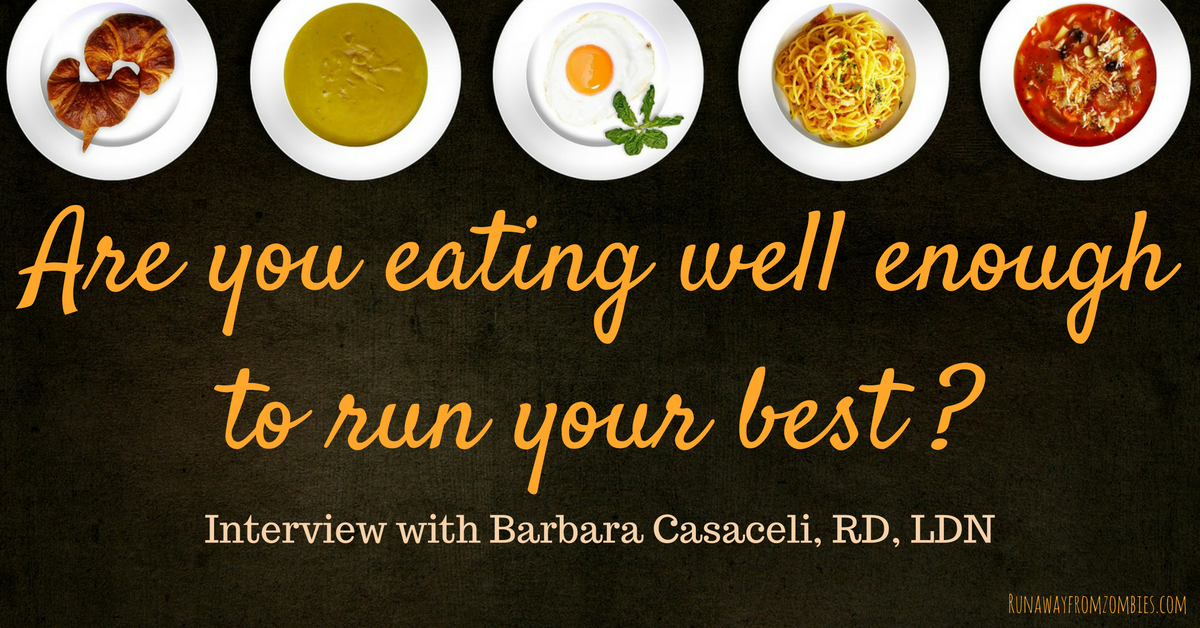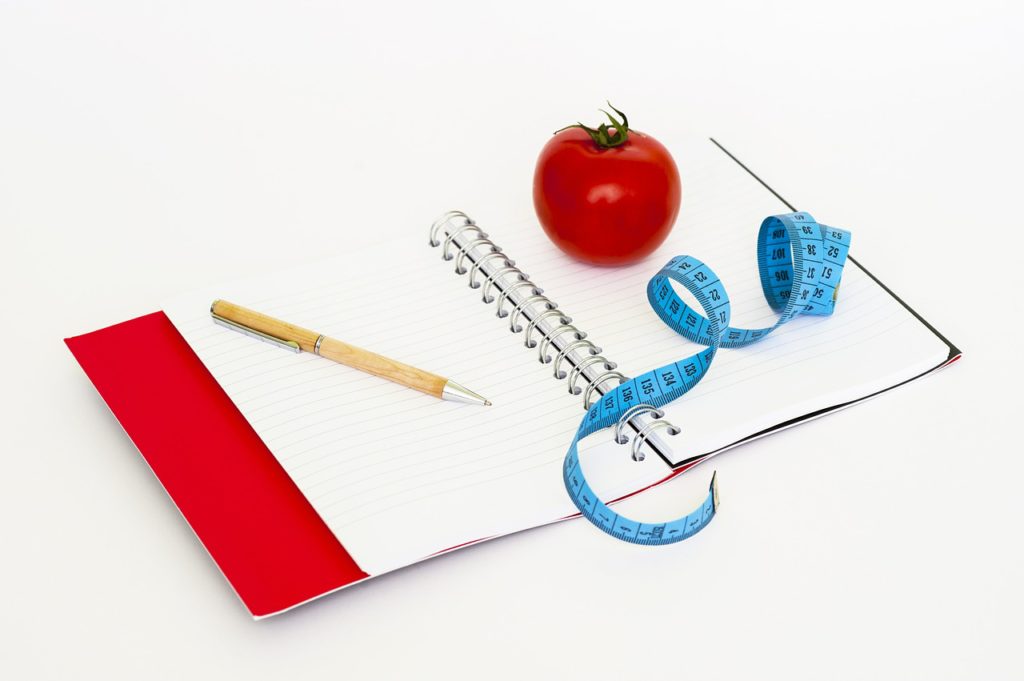Are you eating well enough to run your best? I asked Barbara Casaceli, Triathlon Coach and Registered Dietitian, how we can best fuel our runs, lose weight, and run really fast. Are you doing these simple things to help your races and your health?

Barbara Casaceli is a Registered Dietitian (RD), Licensed Dietitian/Nutritionist (LDN), Level 1 Triathlon Coach, and holds a Level 2 Certificate in Training for Weight Management (through the Academy of Nutrition and Dietetics). A mother of 3, she has competed in triathlons for the last 10 seasons ranging from sprint to half ironman distances (1.2 mile swim, 56 mile bike ride, 13.1 mile run) and 5K to half marathon road races.
As always, check with your doctor and do more research before making any dietary changes.

Are you eating well enough to run your best?
1. How do you know if you’re eating well enough when training and racing?
As an athlete, if you are eating properly you will feel good, have good energy, be able to recover after your workouts, maintain weight, build strength and avoid injuries.
Eating/fueling properly should also help you become faster, stronger – you should see results on the field or track. This being said, eating is just one part of training. We also have to do the work!
What are some signs that your performance is lacking due to nutrition?
You will feel poorly and do poorly if you are not getting enough calories, carbohydrates, protein, fluids, vitamins and minerals.
If female athletes do not consume enough calories and nutrients to support their activity, they can suffer from what is known as the “female athlete triad”. The female athlete triad consists of energy deficiency, low bone mass/osteoporosis (often showing as stress fractures), and loss of menstrual cycle.
Male athletes can suffer from issues with energy deficiency and stress fractures.
2. What are some common pitfalls for runners trying to lose weight?
- Not fueling their activity by under-eating and then binge-eating later because they get so hungry
- Overeating, giving themselves more credit for calories burned than they actually have burned
- Trying to lose weight during training and racing season. Cutting calories while trying to fuel activity/performance is hard and often counterproductive.
How can you avoid these pitfalls?
Work on losing weight during your off-season when your activity and performance levels are lower.
Athletes should eat at regular intervals throughout the day, eating a variety of foods to help keep their body well-fueled for their activities and for recovery but also to help control their hunger and therefore control their intake.
Using a food log is a great way to track intake. There are many apps available (i.e. My Fitness Pal or Lose It), but I have yet to find one that records behavior and mood – which are important in understanding our eating habits. I like people to look at the time of day they are eating, the food and amount they are eating, hunger level, and mood. We often eat not because of hunger but some other trigger, i.e. stress. Tracking your intake can be useful in learning what works as pre-workout fuel, recovery fuel, and what doesn’t work. Any food intolerance can often be found this way, too.

A tomato?
3. When do you need mid-run nutrition?
You need mid-run nutrition for any workouts lasting more than 60 minutes. Additional fuel may also be needed in very hot or humid conditions, if you sweat a lot and for very intense exercise or when performance matters.
Is there a benefit to doing some long runs without fuel?
I’m not sure if the science is in, yet. The unproven idea is that not eating before or during exercise could teach the body to burn more fat.
I went to a conference last December on Sports Nutrition put on by 2 experts in the field – sports nutritionist Nancy Clark RD and exercise physiologist John Ivy PhD. They both emphasized eating before a workout, even if it’s small like a banana. Not eating can inhibit hormones necessary for protein synthesis which builds muscles.
I think fueling is truly personal. What works for one person doesn’t necessarily work for someone else. As we train – doing our speed work, hill repeats, or long runs – we need to also practice fueling and paying attention to what works (timing, amount, food choice, liquid, gel, or solid).
Check out some mid-run fuel options here.
4. Best recovery foods after a run?
Recovery should include fluids, carbohydrates and protein. Fluids are needed for to get your body back to the pre-workout weight. Sports drinks work great especially if you are a “big” sweater. Carbohydrates replenish energy stores in your muscles. Protein is essential for recovery, helping the muscles repair, recover and build stronger (protein synthesis).
Examples of recovery fuel include:
- Slice of toast with peanut butter and banana with 8 oz glass of juice and water
- 12 oz chocolate or strawberry milk with a granola bar and water
- 1 cup of trail mix (cereal, seeds or nuts, dried fruit) and water
- Read 6 more post-run snacks

5. What are simple things we can do today to eat healthier and fuel their runs?
- Eat a variety of foods – fruits, vegetables, whole grains, lean protein, and low-fat dairy (unless there is an intolerance or allergy)
- Track your intake with a food log to gain greater understanding of your body and mind’s relationships with foods (intolerances, weight loss/gain, etc)
- Strive for 80/20 – no need to be perfect! 80% of the time you eat well, 20% you treat yourself a little
- Drink water – most of us don’t drink enough water
6. Where can we learn more about nutrition?
- Eatright.org by the Academy of Nutrition and Dietetics. You can find a local dietitian at your state’s dietetic association (i.e. www.eatrightMA.org for Massachusetts) .
- SCAN: Sports, Cardiovascular and Wellness Nutrition a dietetic practice group of the Academy of Nutrition and Dietetics. You can find a sports certified dietitian/nutritionist here.
- Nancy Clark RD’s Blog a RD and sports certified nutritionist
- Runner’s World
Thanks to Barbara for answering these questions!

Share on social media!





After looking over a few of the blog posts on your site, I truly like your way of blogging. I saved it to my bookmark webpage list and will be checking back soon. Please visit my website too and tell me your opinion.